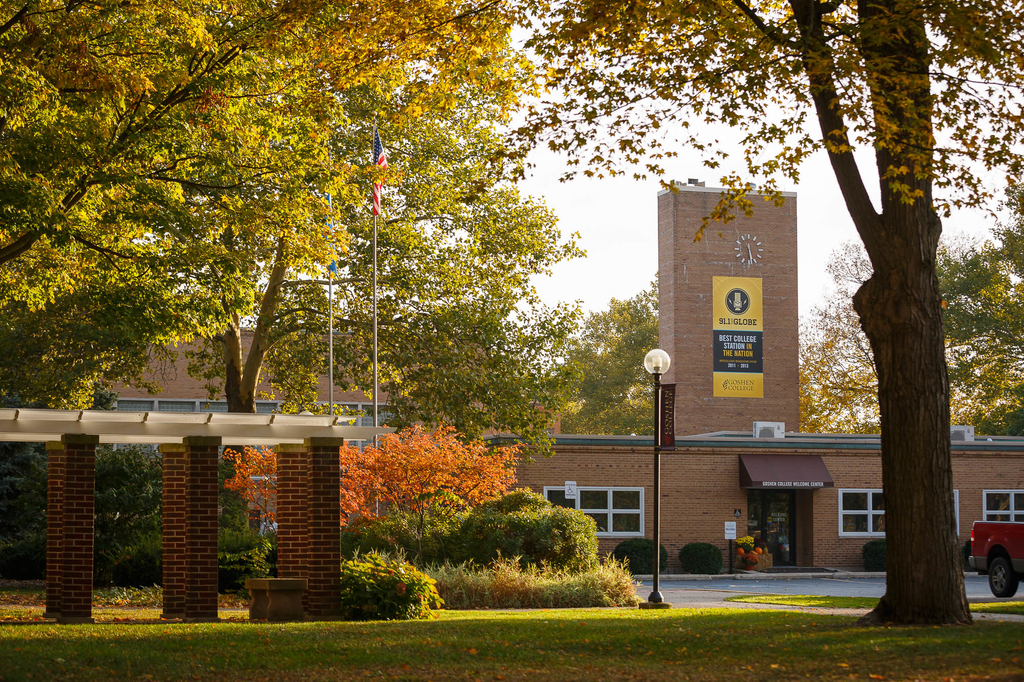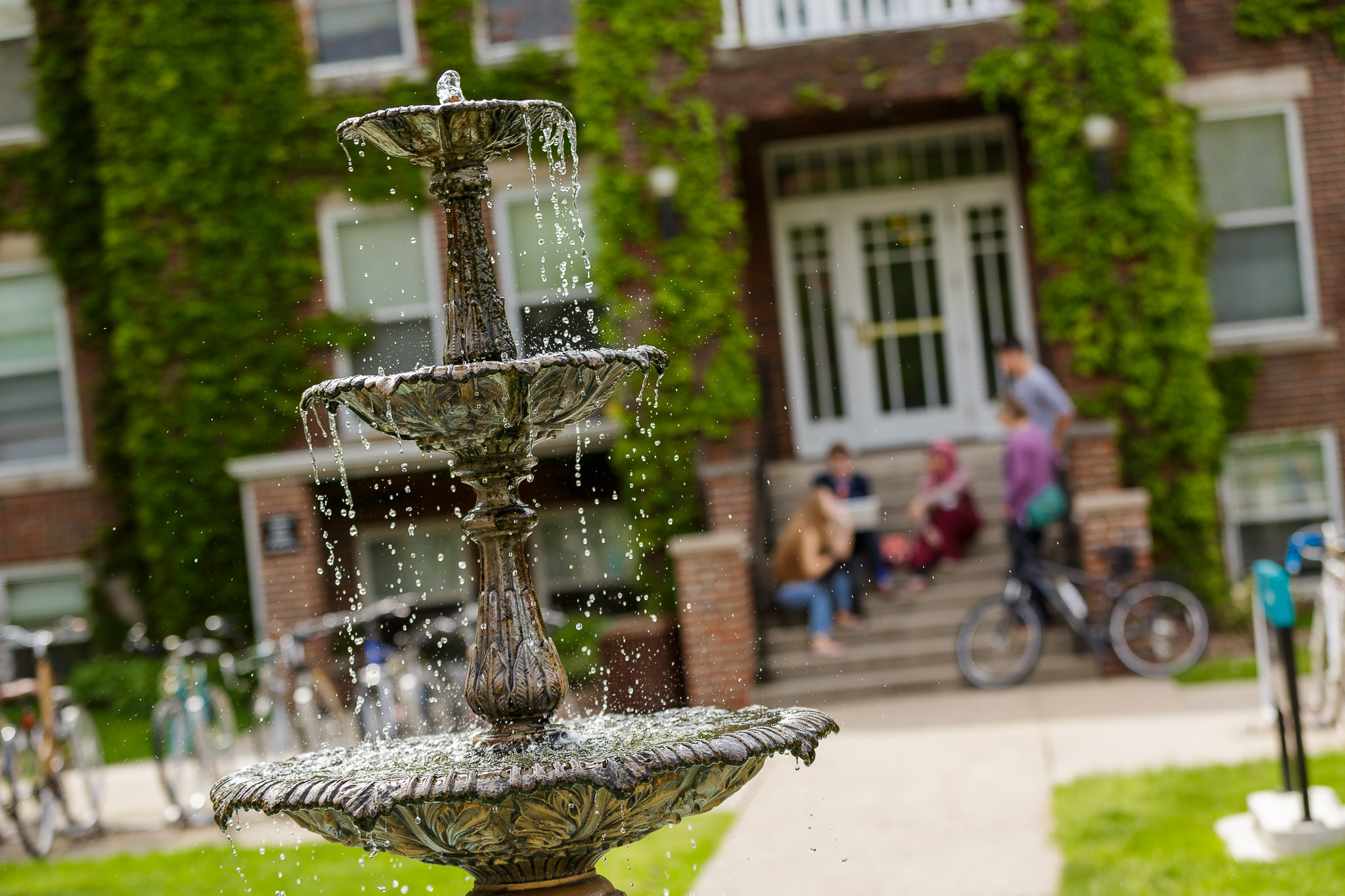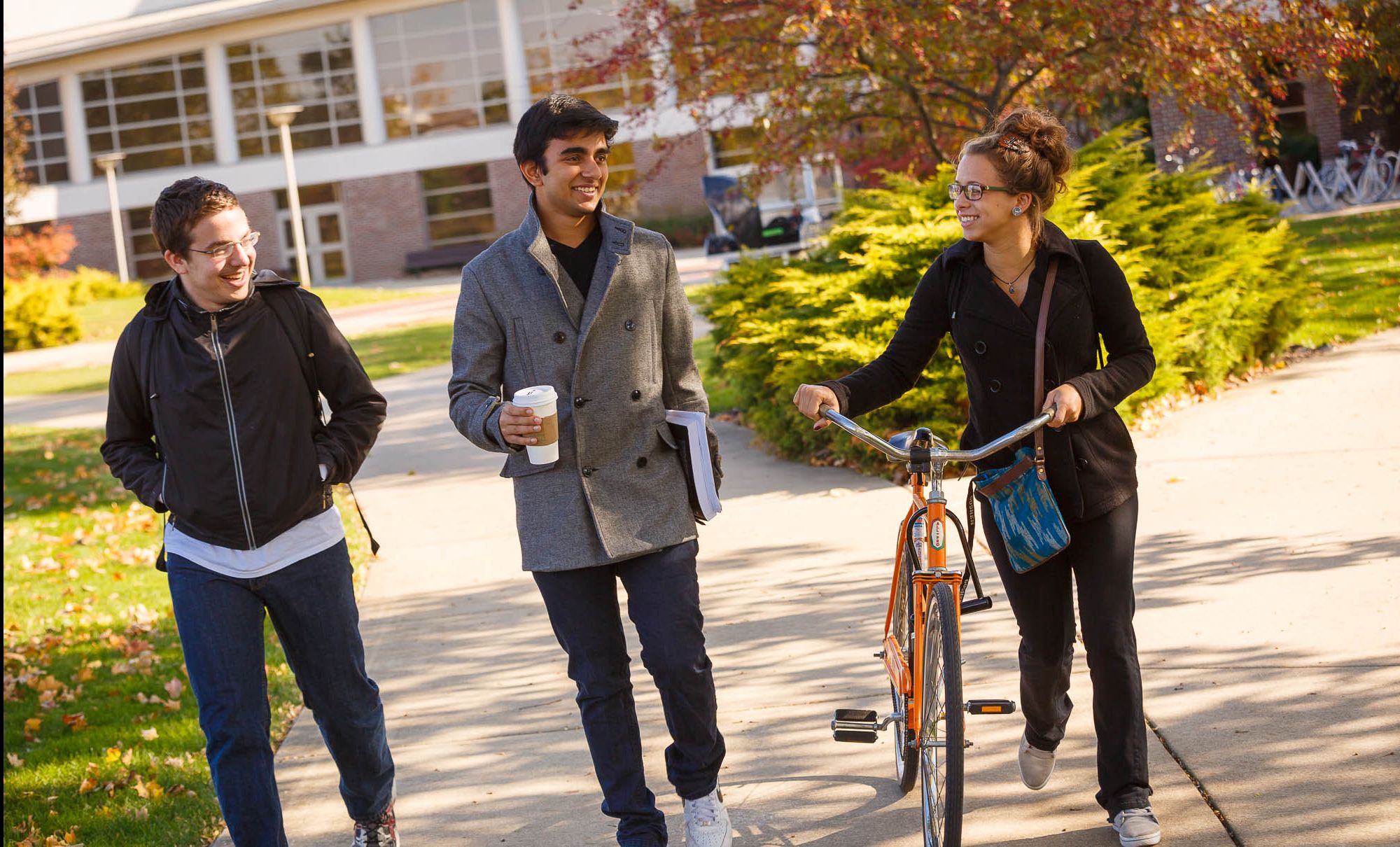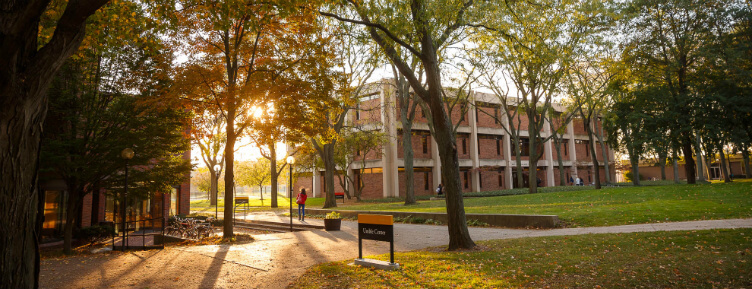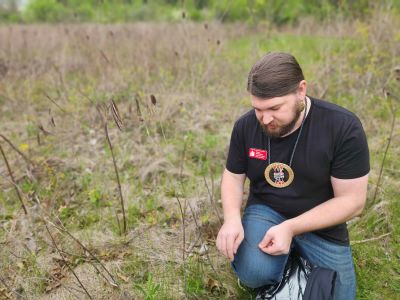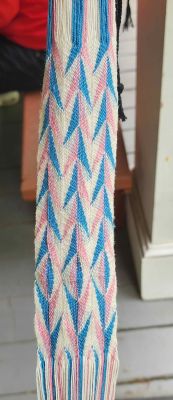By Crystal Edson, senior environmental & marine science major and sustainability minor, and member of the Local Indigenous Cultures and Perspectives May Term course.
On May 3, our class traveled to the northwest side of Fort Wayne, Indiana, and had the honor of meeting Jared Nally (Ahsapa), of the Miami (Myaamia) Tribe of Oklahoma. He serves as Deputy Tribal Historic Preservation Officer at the Miami Tribe Cultural Resources Extension Office (CREO). The purpose of the CREO is to provide tribal members living in the lower Great Lakes region the opportunity to reconnect with their Myaamia history, language, and culture. Jared described his role as “external education about the Nation and relating to the federal government.”
He is a talented weaver who enjoys creating and working with textiles. By hand spinning natural plant materials like dogbane and milkweed fiber, he turns them into cordage for crafting. He demonstrated this technique for us using dogbane, which is what Ahsapa translates to in Myaamia language. This talent is his gift that connects him with his community and is his way of reclaiming his indigeneity.
Our guided tour started with an introduction to their newly acquired 45-acre property, Peehkihkayonki, which fittingly translates to “The Beautiful Place.” It includes 13 acres of woods with trails, a 3.5-acre pond, a garden, offices, lacrosse fields, and is currently constructing an educational community center. We were given an oral briefing on the history of the Myaamia tribes’ forced removal, treaties, and land successions. There are approximately 7,000 citizens in the Myaamia tribe, 1,200 of whom reside in Indiana, and the rest of the population is spread out across the entirety of the country, with the exception of Maine.
Jared explained to us how traditional-style wigwam housing is made by constructing a dome-shaped structure using saplings, bark, and cattail matting. Those consisting of cattail matting are semi-permanent but ultimately portable, whereas the bark siding, after drying and hardening, is not. Although women traditionally make the cattail mat siding, Jared showed us the cattail matting he created, and we admired the labor-intensive intricacies of his work and abilities.
A model of the siding attached to a wigwam gave us insight as to how this structure would look on a full-sized scale. Along with the wigwam model, an Elm bark basket was displayed and provided a hands-on educational outlook into the details of this traditional craft.
Some interesting parallels we learned about between the Miami people (Myaamiaki) and the Pokagon Band of Potawatomi (Pokégnek Bodéwadmik) include patterns as well as the different types of bark used to make baskets. The Myaamiaki predominantly use elm bark for siding and basket making, as well as American basswood for spinning cordage, whereas the Potawatomi tend to use birch bark. Both tribes use bodies of water like lakes, rivers, and even the morning dew to break down and process these natural materials, making them easier to work with. Here is a short video of hand-spinning dogbane.
Conservation interests have emerged concerning the sustainability of working with elm trees, especially American Elm, as they are highly susceptible to Dutch Elm disease, which is a fungal disease spread by elm bark beetles. The Myaamia have turned to using alternative sources of tree bark for making traditional textiles, cordage, baskets, and housing materials from invasive species such as Bradford pear and autumn olive.

Regarding contrasting patterns, the Myaamiaki demonstrate diamond-shaped, geometric patterns in their ribbon work, whereas the Pokagon Band of the Potawatomi adorn floral patterns. The Miami intentionally clothe their representatives in a way that symbolizes power and authority. Jared shared with us the concept of dressing their representatives with patterns that “shimmer.” Jared described a powerful person as “someone who’s hard to look at.” To create this shimmer effect in their clothing, they incorporated a lot of silver that catches the light, high contrasting colors that are tiring on the eye, patterns that are hard to focus on, and ribbon work that force the eye to move. The combination of all these techniques make the representative “hard to look at,” thus, making them “shimmer.”
Jared also led us through a finger-weaving workshop, kindly demonstrating his craft and showing two of his pieces. The first piece displayed colorful, inclusive triangles of pink and light blue, consisting of a 120 thread count, and the other, lovingly known by community members as the “48 hour bus ride sash” consisting of 210 strands of thread, carefully woven in black and red to create iconic geometric triangles, demonstrating the “shimmer” effect.
Using eight strands of thread, we practiced the gestures of finger weaving with Jared’s guidance to build up our muscle memory before actually weaving the strands together in a diagonal, candy-cane striped pattern. Jared encouraged the retention of the weaving pattern in our minds by narrating how the “right-most strand is the traveler who goes off on an adventure before coming back to join its friends,” while alternating between a “scissor grab” and “pinch” technique, to form the pattern. Some students caught on quickly, while others, such as myself, struggled a bit, but ultimately, we all had fun with the challenge and continued to practice this technique in our spare time. Multiple students have commented about their excitement and intentions to share what they’ve learned and to teach their future children as well.
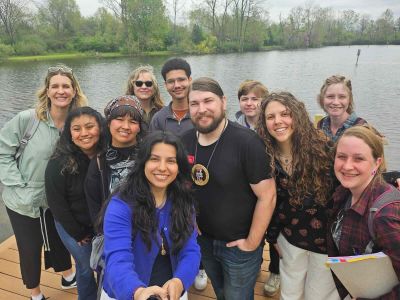
There is so much we can learn from Indigenous cultures and their perspectives. If these lessons in community building were implemented on a nation-wide scale, our collective society could grow to be the beautiful, symbiotic community that I know it could be. We could achieve this by reallocating our resources towards meeting the universal needs of all people; because everyone has innate value simply for existing, as opposed to being so capitalistically driven and focused on monetary outcomes. In short, prioritizing people and the planet over profits and financial gain. It starts with empathy, humility, and the willingness to change.
Lastly, I inquired about the concept of reparations, to which Jared explained it’s not about that, per se, but more so about forming and rebuilding relationships. “We need to do what we can for our nation today, and that is through partnership.” We thanked Jared for his time, wisdom, and for passing along insight into his culture and craft. My takeaway from that conversation is that when the federal government is making decisions, even in the interest of tribal nations, tribal citizens deserve to have a say in how those decisions are made. They deserve autonomy and a seat at the table, and ultimately, to be heard and respected.

